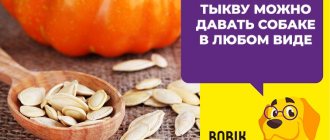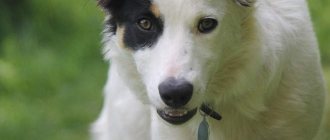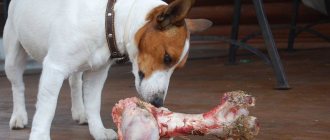Dogs are carnivores with very specific digestive systems. They need to have ingredients containing animal protein in their daily menu. To the greatest extent it is meat, but it is impossible to imagine a properly composed diet without offal.
A balanced natural diet should provide the right amount of substances and microelements, which are often not found in meat, and not overdo it with them. Thus, an excess of certain vitamins can lead to the formation of kidney and liver stones. Due to the need to maintain balance, it is impossible to replace meat completely with giblets, but they must be added evenly.
Beneficial features
First of all, it is nature’s nature for dogs to consume the entrails of other animals. Wild relatives of domesticated dogs eat their prey completely, without neglecting its internal organs, legs, and skin. All this can be digested and even bring great benefits.
In addition, in the entrails, due to the peculiarities of the functions they perform, much more essential substances accumulate than even in the best meat. They include microelements:
- Iron.
- Zinc.
- Phosphorus.
- Iodine.
- Potassium.
- Magnesium.
- Copper.
- Selenium.
- Collagen.
Useful substances that improve metabolism, digestion and hair are Omega 3 and Omega 6.
And the most important part, which can only be replaced with special nutritional supplements – vitamins:
- A.
- Group B.
- TO.
- E.
- Folic acid.
- D is the most important of the entire list. A deficiency will lead to improper formation of the skeleton, rickets and problems with muscles and bones. The body primarily absorbs vitamin D from sunlight, so in winter or when living in the north of the country, it is extremely important to add ingredients to your diet that contain the required amount of this substance.
Also, each by-product has its own special properties that allow solving various problems with the health and appearance of pets without the use of chemical and synthetic additives.
Another advantage of offal is its low calorie content, so it is common practice to use it as a dietary product for overweight problems in pets.
Also, do not forget about the low cost of most offal, which can significantly reduce the cost of keeping a dog without causing serious harm to its body.
Benefits of offal
There are several types of offal that dog breeders feed their pets. These are beef, lamb, pork, poultry and rabbit offal. If the dog owner goes hunting from time to time, we can say that the dog is very lucky. He can enjoy such delicious and healthy meat as venison, elk...
Many people underestimate the valuable qualities of offal, because their calorie content is much lower than that of meat. But, despite this “disadvantage”, they contain much more useful microelements. In addition, tripe is considered a dietary product due to its low content of heavy fats and carbohydrates.
Offal is rich in phosphorus, iodine, iron, potassium and magnesium. They are rich in folic acid, which is vital for the formation and development of the immune and circulatory systems.
By-products contain a huge amount of B vitamins, essential vitamins A and D, the benefits of which I spoke in detail when describing natural supplements for dogs.
The liver is especially rich in vitamins A and B. But there is a lot of vitamin D in beef liver, as well as in the rumen, kidneys, tongue and heart. This is especially necessary for animals living in northern regions. An insufficient number of sunny days leads to a deficiency of this particular vitamin. By the way, Russia is located in a zone of reduced solar activity, which means that both people and animals are at risk of vitamin D deficiency. A lack of this vitamin can lead to diseases of the cardiovascular system, musculoskeletal system, muscular dystrophy, rickets, skin and infectious diseases, malignant tumors.
Trip contains beneficial fatty acids such as Omega-3 and Omega-6, which have a positive effect on the immune system, inflammatory and allergic reactions, regulate blood pressure, body temperature and much more.
Well, and perhaps not the most important, but nevertheless a pleasant point: lungs, liver, tripe and all other offal are an order of magnitude cheaper than meat.
Negative reactions
Giblets are not for everyone. Many people, especially those who were overfed in childhood, develop food allergies to one or another product. Most often, a negative reaction applies to only one element, and it is enough to identify it and eliminate it for the pet’s well-being to return to normal.
Allergies usually manifest themselves:
- Digestive problems, externally expressed by diarrhea.
- Vomiting.
- Skin irritation in sensitive areas: on the ears and face, in the armpits, on the front legs and around the anus.
- Scabies and red spots.
- Hair loss in certain areas.
- Infections that can be caused by improperly processed food.
Acceptable types
Creating a balanced menu for a natural-fed dog is a difficult task, and when introducing tripe, the main thing is not to overdo it. It is impossible to completely replace the meat component of food with tripe without losing the quality of nutrition and without bringing the pet to the dangerous point of an overabundance of various substances, leading to the development of diseases and pathologies of internal organs.
Not all types of tripe are equally useful; some of them will only bring harm. However, the list of good ingredients is quite wide and varied.
Scar
The section of the stomach of herbivores, where the main process of food digestion occurs, is an extremely important element of nutrition for puppies and adult dogs experiencing problems with the digestive system. In addition to the undoubtedly useful vitamins and microelements in fibrous meat, similar in its characteristics to muscles, there are unique bacteria that are ideal for stabilizing and improving the intestinal function of your four-legged friend. That is why the tripe begins to be fed little by little from 5-6 months.
It is important to remember that only the unrefined version will benefit. If the dog refuses to chew the tripe “dirty” because of the specific smell, you can begin to teach it gradually, giving well-washed pieces. It makes no sense to cook, since all the beneficial properties disappear due to the death of bacteria. But if you doubt its safety, you can freeze it for 2 days.
When feeding tripe to pets, a person must follow certain safety precautions, since the bacteria that are beneficial for dogs are very harmful to people. Touch the stomach only with special gloves or wash your hands thoroughly with soap after handling.
Liver
The second most useful and popular organ for dogs is the liver. And this is well deserved. The unique function that the liver performs in the body results in this product being free of toxins yet loaded with vitamin A, which is easily dissolved by fat.
However, liver in large quantities is harmful, as it can cause the formation of stones . In addition, it is considered dietary, which means it is not able to provide the necessary amount of energy for a constant active life.
Veterinarians advise giving beef or poultry liver 1-2 times a week, not more often.
At the same time, liver can be given raw only when purchased from places checked by veterinarians, because it often contains worm larvae. To avoid possible infection, the liver is either frozen or boiled before feeding. Some of the nutritional properties are lost, but the risk of infection is also reduced.
Kidneys
Kidneys help improve the condition of hair and skin, and normalize the functioning of the digestive system. One of the few that can be given raw. The kidney is cut in half, soaked in water and fed.
Heart
The organ consists of powerful muscle tissue, so the heart is often used as a trainer for the jaw muscles and for cleaning plaque from teeth. Also, the positive aspects include the unique composition. This muscle contains enzyme Q10, which slows down aging, and collagen, which is needed for ligaments and joints. Therefore, a heart is necessary for large dogs whose lives involve a lot of physical activity. Feed raw.
Lung
One of the products that has very little benefit. You should avoid adding it to your regular diet. The lungs contain little protein, but there is a lot of connective tissue that is harmful to the digestive system.
If they are introduced into the diet, it is only in combination with other meat elements. But, given that the lung is poorly digested, this is unwise.
Recommended by-products
Now let's take a closer look at what by-products can be given to a dog, and what benefits they bring to the animal's body. I will not describe in detail all the beneficial properties of tripe. Quite a lot has been written about this. I would just like to note that almost all offal is saturated with valuable microelements, the content of which in muscle meat is an order of magnitude lower.
Heart
In its structure, the heart is most similar to muscle meat. However, it is much denser and heavier than the first, and it contains twice as much collagen, elastin and protein.
The heart is given both boiled and raw. You can include beef, pork, lamb or chicken hearts in your pet's diet (if you are not allergic to chicken products).
Scar
The rumen is the most valuable part of the herbivore's stomach, rich in protein, enzymes and beneficial bacteria that help digest plant foods. Enzymes neutralize and remove toxins from the blood, strengthen the immune system and generally support the functioning of the barbosik’s gastrointestinal tract.
But, despite the specific smell, to put it mildly, it is the unpeeled raw tripe that is most valued.
Although some four-legged owners find the smell of tripe disgusting, almost all dogs simply fall into ecstasy from this offal and adore dishes made from tripe.
Kidneys
The kidneys contain vitamin D and a huge amount of fatty acids, which have a beneficial effect on the condition of the skin and coat of the four-legged animal.
Kidneys can be fed either raw or boiled. But, before giving the dog raw offal, it is recommended to soak the kidneys in cool water for about 30 minutes.
Liver
The liver acts as a kind of filter through which toxins enter the body.
The amount of liver should not exceed more than 5% of the pet’s total meat diet. But these numbers have nothing to do with the filtering function. All passing toxins do not settle in the liver, but are successfully neutralized.
The percentage of recommended dosage is due to the fact that the liver contains a huge amount of fat-soluble vitamin A, which can trigger the formation of stones. In addition, an excess of the product can lead to digestive upset.
Liver is rich in iron, folic acid, vitamins A, B and D:
- Iron improves blood composition, maintains hemoglobin and sugar levels.
- Vitamin A has a positive effect on reproductive functions.
- Folic acid, vitamins B and D strengthen the nervous and cardiovascular systems.
Liver is most beneficial for growing puppies and lactating bitches. It can be given to dogs either boiled or raw. Raw liver contains much more nutrients. However, if your pet is on a raw food diet, in order to avoid infection with helminth larvae, which are sometimes found in the liver, it is better to buy the product from a trusted manufacturer and freeze it for at least three days before feeding it.
Spleen
The structure of the spleen is something between muscle meat and liver. Like the liver, the spleen is rich in protein, iron and amino acids.
But, just as in the case of liver, it is advisable to feed your pet with it in limited quantities and in boiled form. Excessive amounts of this by-product can lead to loose, black stools.
Lung
Lung is a rather controversial by-product. There are not as many benefits in it as from any other tripe. There is little useful protein in the lung. But there are plenty of connective fibers in it, as a result of which the product is poorly absorbed.
You cannot feed your dog this by-product alone. This can lead to permanent gastrointestinal disorders.
Selection, storage and preparation
Puppies begin to feed certain types of offal at 2-3 months of age, usually udders or chicken necks. However, tripe is added to the main diet no earlier than 5 months, and in very small portions. At such a young age, it is easy to harm the developing digestive system, so any new type is introduced gradually, while all reactions of the body are carefully monitored.
It is very important to choose the right ingredients for the doggy table. There is an opinion that your four-legged friend will not suffer much if part of his dinner is not very fresh, but this is not so. Getting stale elements into your diet will lead to serious poisoning. You can give fresh raw giblets only after they have been examined by veterinarians, otherwise you cannot be sure of their safety for the dog.
To avoid possible infection with various infections or internal parasites, offal is thoroughly frozen at a temperature not exceeding -22 degrees Celsius for several days or boiled. It is worth remembering that when cooked or turned into minced meat, most products in this group lose half of their properties, but this comes at the cost of the animal’s safety.
The ideal option for storing such food is frozen. Divide the purchased organs into portions that are enough for one meal and freeze.
Pork in Pet Food: PROS and CONS
Rarely does a product come under as much attack as a simple piece of pork. Nutritionists have long put her on the “black list” of foods dangerous for her figure. Veterinarians from all over the world describe in vivid colors all the “horrors” of pork consumption and scare with dire forecasts those breeders who risk breaking the ban. Among all this often biased criticism, it can be difficult to hear the arguments of researchers proving the usefulness of this type of meat. Let's figure it out together to weed out dry facts from myths. What do we know about pork?
As soon as you hear the word “pork”, it’s not difficult to remember the four most common stereotypes that can discourage you from not only eating, but even looking at it:
Stereotype No. 1: “Poorly absorbed.”
“Too heavy” - this is the diagnosis given to this meat by animal lovers. Allegedly, one piece of raw pork can make your four-legged friend feel ill. In fact, this is just a myth. Recent studies have proven that pork takes an honorable second place in digestibility after lamb, easily ahead of its closest “rivals”: beef, chicken, duck and turkey.
Stereotype #2: “Too fat.”
If you've ever been into diets, you probably know that pork is one of the top "forbidden" foods. Of course, lard cannot be called a dietary product, but do not forget that “pork is different from pork.” In lean parts of meat, the amount of fat is several times lower than in beef, lamb and chicken. Here are some dry statistics: 100g of lean pork contains 2.98g of fat, while “diet” chicken contains 3.03g.
Stereotype No. 3: “Few nutrients».
People have long awarded pork with the title of “poor” meat - with a minimum amount of vitamins and microelements. The truth will surprise even many experts: pork is the undisputed winner in terms of the content of B vitamins among meat products. And its positive properties do not end there. Iron, selenium, potassium, manganese, sodium, phosphorus, cobalt, copper, zinc and magnesium are just a few of the ingredients that make up a good cut of pork. It also contains many amino acids, such as lysine and arachidonic acid, without which it is difficult to maintain good health for pets.
Stereotype No. 4: “Pork by-products are harmful .” Pork liver and heart are even more terrifying than regular meat . The mythical basis for this misconception is the lack of useful substances. And then by: by-products are a real storehouse of vitamins. Just 100g of pork liver can satisfy an adult’s vitamin B12 needs for two whole weeks, and pork heart is an excellent source of potassium, phosphorus, iron and iodine.
So, we can conclude that “the pig is not as scary as it is painted,” but... there are several nuances.
Hidden dangers
Unfortunately, several common myths are far from the only reason for a wary attitude towards pork. There are at least two serious reasons that concern professional dog and cat breeders.
- Aujeszky's disease or infectious bulbar palsy
The so-called “false rabies” is a deadly disease. The virus is transmitted through raw meat of a sick or recovered pig. However, it is very easy to protect yourself from it - heat treatment of meat (regular cooking for 15 minutes) completely destroys the terrible virus.
- Trachinosis
Under the beautiful name Trichinella spiralis hides one of the most dangerous parasites that causes a serious, poorly diagnosed disease. Moreover, even cooking meat is not able to completely rid the animal of all danger. If the pig has been infected for a long time, then the parasite larvae turn into “pupae” that do not die even when exposed to high temperatures. It is no secret that trachynellosis is terrible not only for animals, but also for humans. That's why you should only buy pork that has been tested in a laboratory. In this regard, it is worth paying attention to large manufacturing companies, which under no circumstances will “turn a blind eye” to the origin of the ingredients of their products and thereby risk their reputation.
Ready-made rations with pork
Until recently, it was difficult to find ready-made dry food and canned pork on pet store shelves. But recently, some manufacturers have begun to pay attention to this useful product, which has been unfairly ignored. Using pork in the diet of pets provides several advantages. Firstly, it is high nutritional value and calorie content of the feed. Secondly, it contains a high content of useful substances. And thirdly, due to the rare use of pork in pet food, this type of meat is extremely rarely the cause of food allergies. At the same time, the technical equipment for the production of pet food makes it possible to completely protect the animal from possible risks, including achieving a complete balance of fats, proteins and carbohydrates, which is especially important for overweight animals.
Dog owners should pay attention to ACANA YORKSHIRE PORK dry food - for dogs of all breeds and ages. This is one of the new products in the Acana Singles series, containing only one protein source and thus ideal for allergic animals, as well as for those with gastrointestinal diseases. In addition, it is worth noting the complete absence of grains in this food, which is also important to consider when feeding the above categories of pets.
Quite recently, a new product appeared on the Russian market - Orijen freeze-dried treats for dogs and cats, among which there is a formula based on wild boar meat: for dogs it is ORIJEN FD WILD BOAR DOG , for cats - ORIJEN FD WILD BOAR CAT . The composition of the delicacies will make even a person lick their lips: only 100% wild boar meat, of which 50% is wild boar liver, and 50% is boneless wild boar meat. The uniqueness of this product also lies in the special preparation technology “Freeze Dried” (literally “cold dried”), which allows you to preserve the maximum nutrients of fresh meat due to its processing at a temperature of -50°C.
In the production of Acana and Orijen feeds, only high-quality meat is used that has passed strict veterinary control in Canada and is recognized as suitable for human consumption!
Return to top
Industrial feed
In the composition of industrial dry food, the presence of by-products is often listed first. Before purchasing such a pack, you should know about some of the features of using this ingredient on an industrial scale.
Firstly, it should not come first, since tripe is not as nutritious as meat, which means the food will not have enough calories and will not be able to provide the necessary energy for an active life.
Secondly, dry food contains organs that are unsuitable for human food. That is, this is tripe that has not been frozen for more than a day since the carcasses were cut up. It is no longer suitable for people, but for dogs after appropriate processing, drying and grinding it will be completely healthy and will not cause any harm.
How and what to feed your dog
Despite their undoubted benefits, the share of these products in a dog’s diet should not exceed 15%. It is enough to give your dog offal twice a week. You can feed your dog tripe daily, but in small portions.
Liver
This filter organ neutralizes toxins entering the body, but does not store them. Therefore, liver can be safely given to your pet. This product is a source of vitamins A, group B, folic acid, and iron.
Vitamin A is a powerful antioxidant, it improves digestion and has a beneficial effect on the reproductive system. Folic acid and vitamin B12 support the health of the nervous system, improve brain and vascular function. Iron increases endurance, participates in the formation of hemoglobin, brain functioning, metabolism, and saturation of cells with oxygen.
The liver is especially useful for rapidly growing young dogs, as well as for preparing breeding dogs for mating and for feeding lactating bitches.
When exposed to high or low temperatures, the nutrient content decreases, so it is preferable to feed dogs raw liver. However, sometimes worm larvae are found in it. To avoid infection, the liver is either boiled or frozen. This product can be fed to animals in its raw form only after a veterinary check.
The share of liver in the diet should not exceed 5%. Exceeding the dosage leads to digestive disorders.
Lung
This organ contains a significant amount of connective tissue, has low calorie content, small amounts of protein and is poorly digested. The lungs do not bring significant benefits to the dog's body. To avoid vomiting, they are introduced into the diet gradually, boiled and crushed. It is better to combine lungs with other offal.
Heart
This is a source of antioxidant and immunomodulator coenzyme Q10, which is necessary for cell activity and inhibits the aging process. The organ contains selenium, zinc, phosphorus, as well as B vitamins and amino acids, which help build muscle mass, produce and store energy, and increase endurance.
Heart contains twice as much collagen and elastin as regular meat, which is important for joint health. It is similar in structure to muscle meat, but heavier and denser. Dogs are safely fed raw hearts.
Kidneys
This offal is rich in vitamins A, K, B, E, zinc, iron, as well as fatty acids that improve the condition of the coat and skin. Including kidneys in the menu normalizes the functioning of the digestive system. Before feeding, it is better to cut them in half lengthwise, soak them in cold water and give them raw to the dog.
The organ is rich in vitamins, but it has a lot of connective tissue and fat, so portions should be small. The udder is perfectly digestible, including it in the diet helps build muscle and adapt to increased loads. There is less fat in the milk udder. Raw udder with milk is given to puppies after 3 months, after removing excess fat. This product is also useful for nursing and pregnant dogs.
Brain
The by-product contains lipids and choline. This is an easily digestible food that allows you to nutritiously feed exhausted animals during the rehabilitation period after illness and male dogs during the mating period. Brains are cooked with rice or buckwheat.
Spleen
This organ contains a large amount of complete protein and iron. In terms of amino acid content, the spleen is close to muscle meat and liver. It is given to dogs boiled.
A large amount of spleen in a dog’s diet leads to black diarrhea and other digestive disorders.
Tripe, abomasum
These are the most valuable parts of the stomach, rich in enzymes, protein, amino acids, and beneficial microflora that help digest food. Enzymes also improve metabolism, cleanse the blood, neutralize toxins, and strengthen the immune system. The stomach is very beneficial for the health of the dog, despite its specific unpleasant odor.
Before feeding, the abomasum and rumen are cleaned of remnants of semi-digested food and washed under running water. Because During heat treatment, enzymes are destroyed; dogs are given a raw stomach, cut into pieces.
Ears, legs, tails
These by-products are not rich in protein, but they contain calcium, phosphorus and serve as a good exercise machine for dog jaws. Leg tendons are rich in elastin and collagen. The skin is a source of amino acids and trace elements. Dogs love to chew on these foods, raw or cooked.
Some owners boil beef legs, lips, ears, and tails for 3-4 hours. The result is a rich broth, which when cooled turns into jellied meat. This dish can be given to puppies from one month of age.
Heads and cartilaginous by-products
The trachea, diaphragm, kaltyk, and epiglottic cartilages contain a lot of protein and are rich in collagen and elastin. The trachea and diaphragm can be given to your dog quite often. They are useful for strengthening the muscles of the jaws, teeth and gums. These giblets are inexpensive and require no processing other than freezing for three days. Before feeding, they are scalded with boiling water. The mucus contained inside the cartilage by-products sometimes leads to digestive upset. Therefore, they accustom the dog to this food gradually, starting with a small amount.
Skinned heads also contain protein. The heads are valuable for their calcium content. They are chopped into large pieces and boiled for 2-3 hours. After this, the meat is separated and fed to the dogs along with the broth. Leftover boiled skull bones should not be given to animals.











